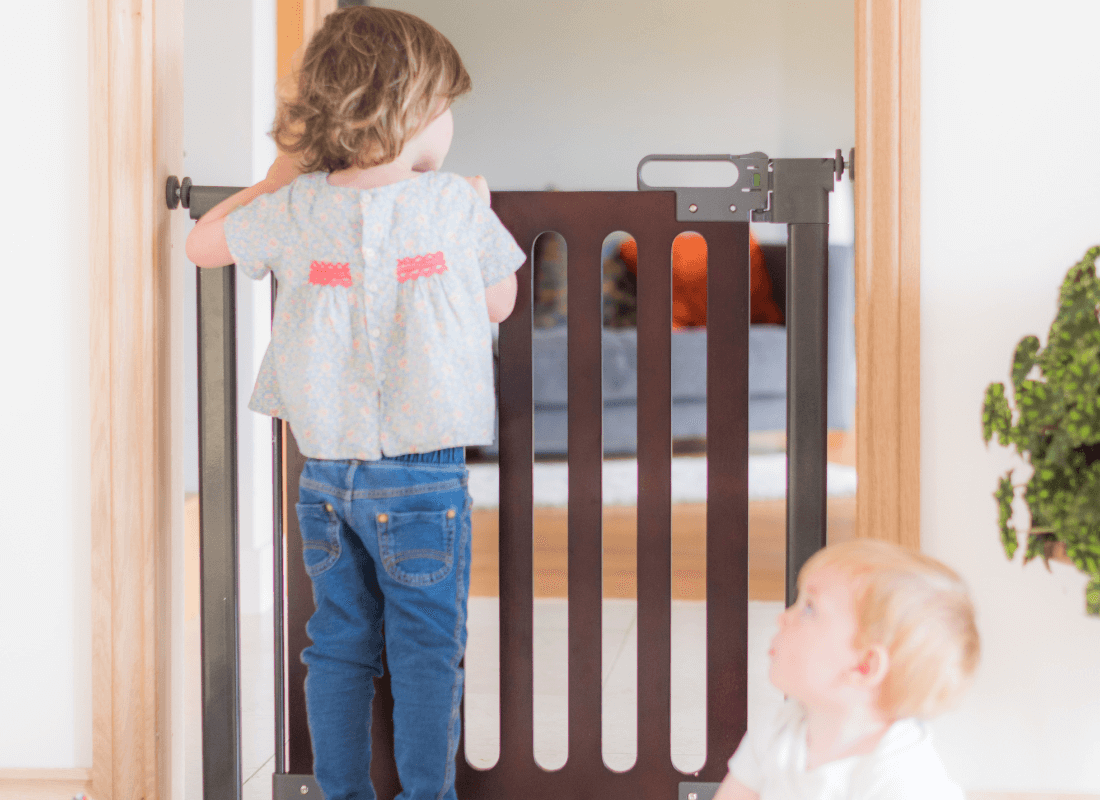
Stairgates: The Do's and Don'ts
|
|
Time to read 4 min
|
|
Time to read 4 min
Keeping your baby safe as they become more mobile is a top priority for every parent. Stair gates are an essential tool for helping to prevent accidents in the home, especially once your little one starts crawling and exploring. However, choosing, installing, and using stair gates correctly is just as important as having them in place. In this guide, we cover the key dos and don'ts of stair gates to help you create a safer environment for your child and feel more confident in your home safety setup.
Once babies start crawling, they can move surprisingly quickly. It only takes a few seconds for a curious child to reach the stairs and try to climb them. Installing a gate at the bottom of the stairs creates an immediate barrier that prevents them from accessing the staircase without supervision. This helps reduce the risk of falls and keeps your child safer as they begin to explore their environment.
A stair gate only works if it is properly closed and locked. It can be easy to leave a gate open when you are in a rush or distracted, but even a few moments of inattention can be enough for a child to slip through. Always ensure that the gate clicks or locks into place after every use. Some stair gates, such as Fred Safety Stairgates, include a visual colour alert that clearly shows when the gate has been left unlocked, providing an extra reminder for busy parents and carers. Teaching all family members and visitors to close the gate properly is also important to maintain a consistently safe environment.
A properly fitted gate should sit directly against the floor with no significant gap underneath. If there is a gap, a baby or toddler could attempt to crawl under it, creating a new safety hazard. A snug fit against the floor prevents your child from slipping through.
The top of the stairs is one of the most critical places to install a safety gate, but it must be the right type. Screw-mounted gates are fixed directly into the wall or banister, making them much more secure than pressure-mounted gates. A securely attached gate provides a sturdy barrier and will not shift if a child leans or pushes against it. When installed correctly, screw-mounted gates also swing open over the landing rather than over the staircase, reducing the risk of tripping or falling.
The top of the stairs is one of the most critical places to install a safety gate, but it must be the right type. Screw-mounted gates are fixed directly into the wall or banister, making them much more secure than pressure-mounted gates. A securely attached gate provides a sturdy barrier and will not shift if a child leans or pushes against it. When installed correctly, screw-mounted gates also swing open over the landing rather than over the staircase, reducing the risk of tripping or falling.
Taking the time to read the fitting instructions fully before installing your stair gate is essential. Each model may have specific requirements for safe and secure installation. Following the instructions ensures the gate is fitted in the right position and with the right fixings, providing the maximum level of protection. Skipping steps or guessing can leave weak points that could compromise your child's safety.
Pressure-mounted gates rely on tension to stay in place, and while they are convenient for certain areas, they are not safe at the top of stairs. The pressure bar at the bottom can easily become a tripping hazard for adults and older children. Always choose a screw-mounted gate for the top of any staircase.
It can be tempting to step over a stair gate when your hands are full or you are in a hurry. However, climbing over the gate sets a poor example for children, who are likely to copy what they see. This can encourage risky behaviour and increase the chance of accidents. It also risks damaging the structure of the gate over time, reducing its effectiveness as a safety barrier. Teaching children that gates must be opened properly helps to reinforce their purpose and maintain a safer environment.
Stair gates are designed for specific indoor use and should only be installed where recommended. Stacking gates one above another or using them to block windows or outdoor areas can create dangerous situations where the gate may fail or where a child could become trapped or injured. Always use stair gates according to the manufacturer’s guidance and in appropriate locations.
As children grow, they become stronger, more agile, and more capable of problem-solving. By around two years of age, many children are able to figure out how to open a gate or climb over it. While a gate may still serve as a helpful barrier in some situations, it should not be relied upon alone.
Even the best safety gate cannot replace adult supervision. Children can find ways to climb, push, or tamper with gates over time. Staying close by and keeping a watchful eye on your baby, especially around stairs and high-risk areas, remains the most important part of keeping them safe. A stair gate is a valuable tool, but it must be combined with attentive parenting to be fully effective.
Stair gates are an important part of creating a safer environment for young children, especially as they become more mobile and curious. Choosing the right type of gate, installing it correctly, and maintaining it carefully are all crucial to their effectiveness. By following these simple dos and don'ts, you can help protect your child from unnecessary risks and enjoy greater peace of mind as they explore their world.
If you are unsure whether a pressure-fit or screw-fit gate is best for your home, you can find out more by checking out our blog on choosing the right stairgate for your needs.



